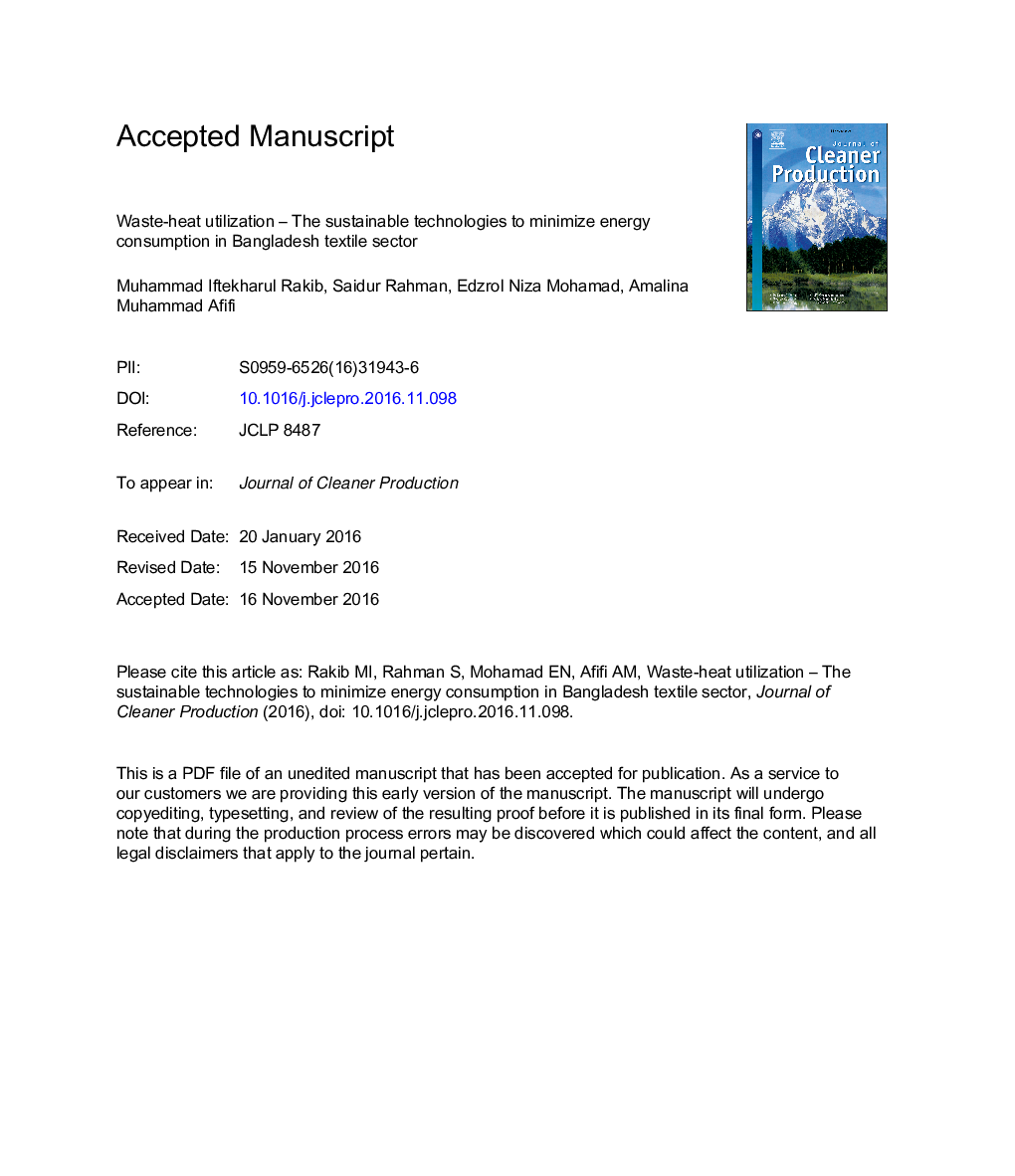| Article ID | Journal | Published Year | Pages | File Type |
|---|---|---|---|---|
| 5480359 | Journal of Cleaner Production | 2017 | 40 Pages |
Abstract
Waste-heat utilization holds great potential for cleaner production by improving energy efficiency, reducing energy usage and enhancing engineering functionality of an industry. Utilization of waste-heat is highly neglected in textile industries of the developing countries. This study quantified the energy and cost saving potential of waste-heat utilization in textile industries with several case studies. It focused on the common waste-heat sources and readily implementable technologies considering both technical and economic aspects. A waste-heat recovery boiler with a capacity of 2.70Â t/h ran by hot exhaust from onsite electricity generators was estimated to save annually 15,094Â MWh of energy and energy cost of USD 141,280. Installing economizer reduced 4.9% of boiler fuel consumption. Approximately 10% of energy used in stenter-setting machines was saved by installing a heat-exchanger that extracted waste-heat of stenter exhaust to preheat fresh air supplied to stenter operations. A counter-flow heat-exchanger was set up for utilizing waste-heat of dyed waste water. The yearly energy saving potential was 5716Â MWh along with minimizing annual energy cost of USD 47,100. A proper stem-condensate recovery system reduced water loss and 10.50% of energy saving was achieved for steam production.
Related Topics
Physical Sciences and Engineering
Energy
Renewable Energy, Sustainability and the Environment
Authors
Muhammad Iftekharul Rakib, R. Saidur, Edzrol Niza Mohamad, Amalina Muhammad Afifi,
